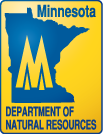DNR news releases, June 16, 2014
MINNESOTA DNR NEWS #45 June 16, 2014
All news releases are available in the DNR’s website newsroom at www.mndnr.gov/news.
Follow the DNR on Twitter @mndnr.
IN THIS ISSUE
Roadsides are important habitat for pollinators and pheasants
Twins offer free hat, discounted tickets through partnership with DNR
Question of the week: emerald ash borer
DNR NEWS – FOR IMMEDIATE RELEASE
Roadsides are important habitat for pollinators and pheasants
Delaying roadside mowing until Aug. 1 benefits pheasants, songbirds, pollinators and more, according to the Minnesota Department of Natural Resources.
“With a growing concern for pollinators, we all need to do our part to protect wildflower habitat,” said Carmelita Nelson, DNR prairie grassland coordinator. “That’s why we urge owners of land along Minnesota roads and highways to avoid mowing or otherwise disturbing the roadside vegetation until after Aug. 1 or even until the fall to provide flowers for bees and nesting cover for birds.”
Roadsides with native wildflowers are especially beneficial to native bees. Research has shown that the width of the roadside and the proximity to traffic does not matter to bees. Minnesota bee keepers place a high value on roadside wildflowers. The loss of habitat is one of the critical causes of the decline of both wild bees and honeybees.
Roadsides also provide more than 500,000 acres of nesting areas in the pheasant range of southern and western Minnesota. Roadside habitat is especially important in intensively row cropped regions where there is little other grassland available.
“After a difficult winter and wet spring, we are concerned about pheasant nesting this year,” said Scott Roemhildt, DNR information officer. “In spite of the weather, pheasant nesting is pretty much on a typical schedule.”
Most pheasant hens are currently sitting on nests and will hatch their broods in mid- to late June. A nesting hen lays eggs at a rate of about one per day. Nests contain an average of 12 eggs. The incubation period is 23 days and starts after all eggs have been laid. The hen remains on the nest, leaving only briefly to feed. If the nest is destroyed, the hen will repeatedly nest until she is successful in hatching a clutch, although re-nesting clutches have fewer eggs.
The peak hatch time for pheasants (about 60 percent) is the third week in June, but depending on the weather there are still a lot of birds nesting in early July. Hens will make from one to four attempts at nesting during the spring nesting season, but will only hatch one brood per year.
Chicks need to be at least two to three weeks old to have any chance of escape from mowers. By Aug. 1 the reproductive season is over for most pheasant with the exception of a few late re-nesting attempts.
In Minnesota, between one-fourth and one-third of pheasants are hatched in roadsides. Roadsides are also important habitat to teal, mallards, gray partridge, many grassland songbirds, frogs and turtles.
The way roadsides are managed can influence the abundance of local wildlife populations. Roadsides should also be protected from burning, crop tillage, grazing, blanket spraying of herbicides and vehicle encroachment during these months. At sites where noxious weeds are a problem, it is recommended that landowners use spot mowing or spraying for treatment.
For more information on the Roadsides for Wildlife program, visit the DNR website: www.mndnr.gov/roadsidesforwildlife or contact the DNR Information Center at 651-296-6157 or
888-646-6367.
-30-
DNR NEWS – FOR IMMEDIATE RELEASE June 16, 2014
Twins offer free hat, discounted tickets through partnership with DNR
Kids and adults who have a 2014 Minnesota hunting or fishing license can still receive a free blaze orange and camouflage Twins logo baseball cap when they buy a discounted Minnesota Twins ticket online at www.mndnr.gov/twins.
The promotion, which started in May, includes the Thursday, June 19, game against the Chicago White Sox. It continues on Saturday, Aug. 16, against the Kansas City Royals; on Sunday, Sept. 7, against the Los Angeles Angels; and on Saturday, Sept. 20, against the Cleveland Indians.
Discounted ticket prices are $16. Ticket buyers pick up their cap at the game. Those who want to buy discount tickets should go to www.mndnr.gov/twins and enter the transaction number, which is printed on the license. The DNR Twins Web page provides ticket buying instructions and shows the location of the transaction number.
A limited number of tickets are available for each game and will be reserved on a first-come, first-served basis. The offer is available only through the DNR Twins Web page.
Minnesota 2014 fishing and hunting licenses can be purchased and printed online at www.mndnr.gov/buyalicense or from any DNR license agent.
-30-
Question of the week
Q: What is being done to stop the spread of emerald ash borer in Minnesota?
A: Cities with known infestations are taking infested trees down and grinding the wood for use as biofuel. The Minnesota Department of Agriculture has released stingless wasps that eat ash borer eggs and larvae. The agency also traps ash borer with guidance from the U.S. Forest Service.
The University of Minnesota is researching cold tolerance among both emerald ash borer and their parasitoids (wasps), and also exploring forest management options to maintain forest health and function after ash trees die. The DNR is working to prepare cities and townships to deal with emerald ash borer once it arrives in their communities.
The combination of these methods has kept ash borer population numbers relatively low in Minnesota and has successfully slowed the rate of spread within the state.
--Susan Burks, DNR invasive species program coordinator



